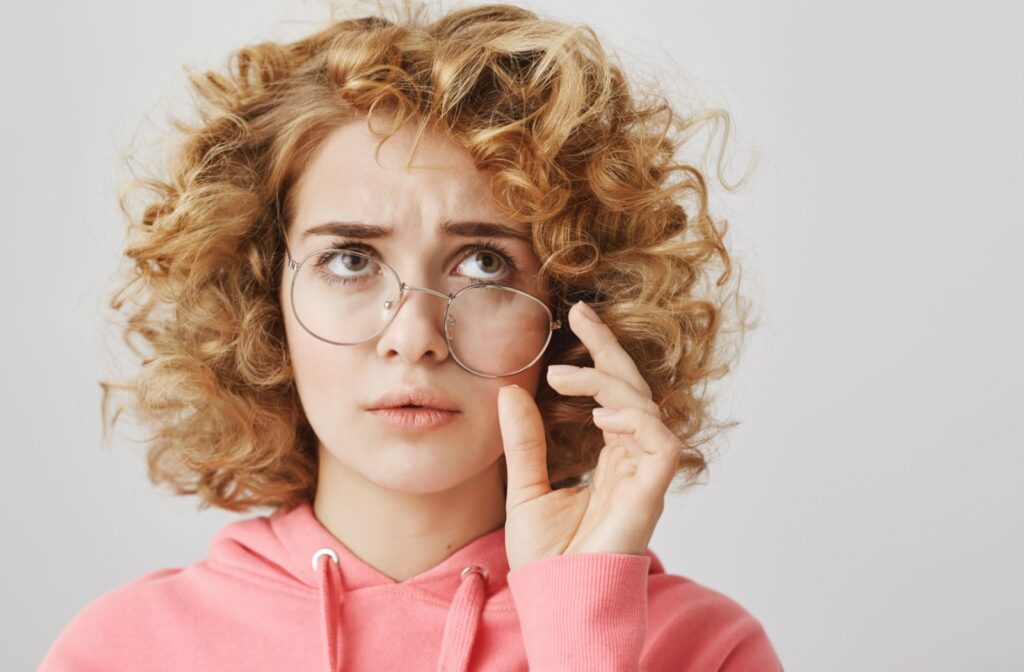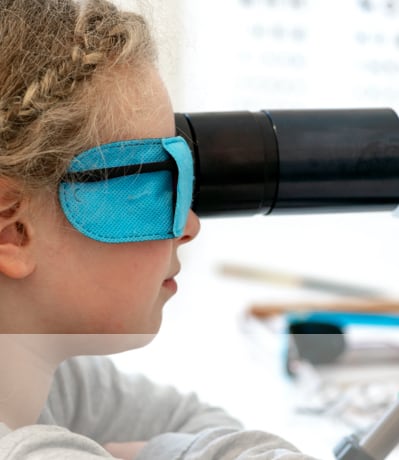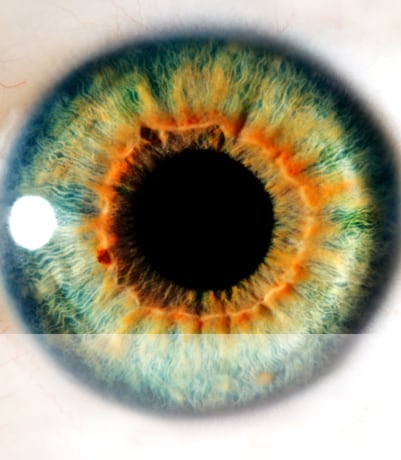Vision is one of the ways we can experience our surroundings, which is why poor eyesight can be frustrating.
Refractive errors and eye conditions are the most common reasons we see poor vision and are closely linked to genetics and environmental factors.
Other causes of worsening vision include eye injuries, age-related changes, certain medications, and unmanaged health conditions.
How Our Vision Works
To understand the factors that can cause vision to worsen, we need to know how vision works in an eye with no visual problems.
Light enters the eye through the cornea, which bends it towards the center of the eye. Here, light travels through the pupil, where the iris adjusts how much light enters by contracting or dilating the pupil.
Behind the pupil, the flexible lens changes shape to focus light directly on the retina. If you’re looking at something up close, the lens thickens and flattens when focusing on distant objects.
The retina, filled with millions of light-sensitive cells, turns light into electrical signals. These signals travel through the optic nerve to the brain, which pieces everything together, allowing us to see the world in sharp focus and vivid color.
When every intricate component of the eye works harmoniously, we experience clear vision. However, even the smallest disruption during this process can result in poor eyesight.
How Refractive Errors Affect Vision
Refractive errors refer to when the structural shape of the eye prevents light from focusing directly on the retina, causing blurry vision.
- Myopia (nearsightedness): The eye’s shape becomes elongated or the cornea is too curved. This causes light to focus in front of the retina instead of directly on it, making distant objects appear blurry while objects close up remain clear.
- Hyperopia (farsightedness): The eye’s shape becomes too short or the cornea is too flat, causing light to focus behind the retina, making nearby objects difficult to see.
- Astigmatism: Occurs when the cornea or lens is irregularly shaped, resulting in multiple focal points instead of a single one, distorting vision at all distances.
- Presbyopia: This is often age-related and occurs when the lens loses flexibility, making it harder to focus on nearby objects.
How Eye Conditions Affect Vision
Beyond refractive errors, several eye conditions can lead to a decline in visual clarity.
- Cataracts: This causes the eye’s natural lens to become cloudy, obstructing light as it passes through the retina, causing vision to appear hazy, blurry, or dim.
- Glaucoma: A group of eye diseases that damages the optic nerve, gradually leading to a loss of peripheral vision or complete vision loss if left untreated.
- Macular degeneration: This age-related condition affects the macula, responsible for sharp vision. This causes central vision loss while peripheral vision often remains unaffected.
- Keratoconus: This causes the cornea to thin and bulge into a cone-like shape, distorting vision at any distance by preventing light from being focused correctly on the retina.
Many of these eye conditions can manifest silently. Routine eye exams allow for early detection, diagnosis, and timely interventions to help slow its progression and maintain better vision over time.

What Causes Poor Eyesight?
The factors contributing to worsening vision are closely tied to the development of refractive errors and eye conditions that affect visual clarity.
Family History
Genetics often lay the foundation of our vision and eye health. Many conditions like myopia, hyperopia, astigmatism, glaucoma, or macular degeneration have strong hereditary components.
The shape of our eye or the structure of the cornea and the lens are influenced by genetics. Someone is more likely to develop myopia if one of their parents is also nearsighted.
Similarly, hyperopia tends to run in families too, it’s often present at birth, but many children outgrow it as their eyes lengthen with age.
Environmental Factors
While genetics set the stage, environmental factors often exacerbate or trigger vision problems. Fortunately, we have much more control in managing our lifestyle to prevent vision from worsening.
Lack of proper lighting, lack of outdoor activities, and increasing activities that demand sustained focus at close distances increase eye strain and are linked to a rise in myopia, especially in children.
Chronic exposure to UV light without proper sun protection increases the risk of developing cataracts and macular degeneration, while smoking and poor nutritional intake can amplify stress on eye tissues, further harming vision.
Age-related Changes
Aging also plays a role, as environmental stressors combined with the natural wear and tear of eye structures can lead to visual changes like presbyopia, cataracts, and low vision, like:
- Difficulty doing everyday tasks
- Difficulty seeing fine details
- Seeing dull lights and color
Unmanaged Health Conditions & Medications
Unmanaged medical conditions like diabetes or high blood pressure can lead to severe damage.
Prolonged high blood sugar levels lead to diabetic retinopathy, damaging tiny blood vessels in the retina, causing these blood vessels to leak or swell, leading to blurry vision, dark spots, or complete vision loss.
Elevated blood sugar also increases the risk of developing other eye conditions that worsen vision, like cataracts and glaucoma.
Similarly, unmanaged high blood pressure leads to hypertensive retinopathy, where blood vessels in the retina thicken or narrow, reducing blood flow and oxygen. Over time, the optic nerve can swell, leading to vision impairment.
As a side effect, certain medications can also negatively affect vision by increasing the risk of developing glaucoma, cataracts or causing blurry vision or light sensitivity:
Injuries
Other factors that cause eyesight to worsen include concussions, traumatic brain injuries, or eye injuries, like black eyes, corneal scratches, retinal detachments, or blunt force injuries, leading to long-term damage if not promptly addressed.
Can Vision Improve Naturally?
Naturally improving vision largely depends on the type and cause of visual problems.
Improving refractive errors is unlikely because these conditions structurally alter the shape of the eye. Improving vision requires eyeglasses or contacts to redirect light to focus directly on the retina or undergoing refractive surgeries.
We can support visual health by practicing good eye habits to avoid eye strain and prevent worsening vision by:
- Wearing our corrective lenses
- Eating a balanced diet
- Taking breaks from prolonged near-by work and digital screens
- Wearing UV protective sunglasses
Schedule an Appointment
Some vision-related concerns may seem inevitable, but the good news is there are ways to maintain your eyesight. Connect with our team at Bettner Vision to schedule an appointment for your routine eye exam.








